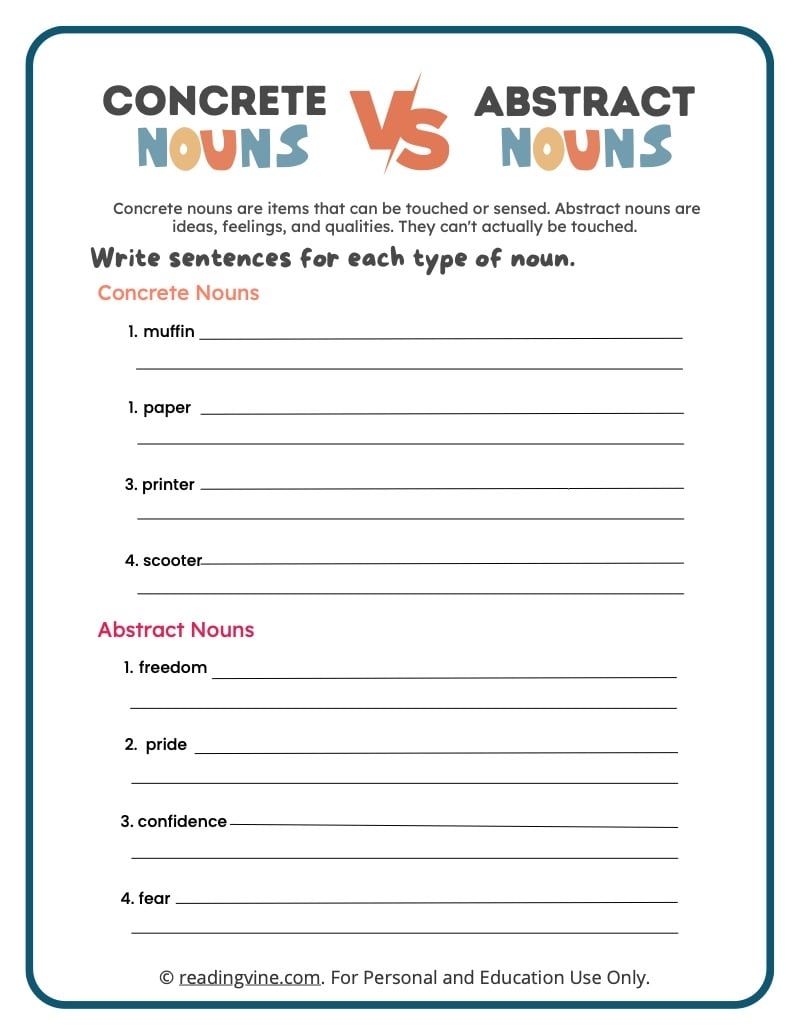Concrete and abstract nouns are essential parts of speech that help us understand the world around us. Concrete nouns refer to things that we can physically see and touch, such as “dog” or “table.” On the other hand, abstract nouns are concepts or ideas that cannot be perceived by the senses, such as “love” or “happiness.”
Understanding the difference between concrete and abstract nouns is crucial for developing strong writing skills. This worksheet will help students practice identifying and using both types of nouns in sentences.
Worksheet Instructions
1. Read the sentence carefully and identify whether the underlined noun is a concrete or abstract noun.
2. Write down the noun and its type (concrete or abstract) in the space provided.
3. Create your own sentences using concrete and abstract nouns to demonstrate your understanding of the concept.
4. Review your answers with a teacher or parent to ensure accuracy.
Example Sentences:
1. The tree provided shade on a hot summer day. (Concrete)
2. Freedom is a fundamental human right. (Abstract)
3. She showed her kindness by helping the homeless man. (Abstract)
4. The children played with their new toys in the backyard. (Concrete)
5. Success comes to those who work hard and persevere. (Abstract)
By practicing with this worksheet, students can improve their ability to distinguish between concrete and abstract nouns in writing. This skill will help them communicate more effectively and create more vivid and engaging descriptions in their work. As students continue to practice, they will become more confident in their use of concrete and abstract nouns, ultimately enhancing their overall writing proficiency.
Remember, nouns are the building blocks of language, and understanding the nuances of concrete and abstract nouns is a crucial step in becoming a proficient writer. Keep practicing and exploring the world of nouns to enhance your writing skills and creativity!
